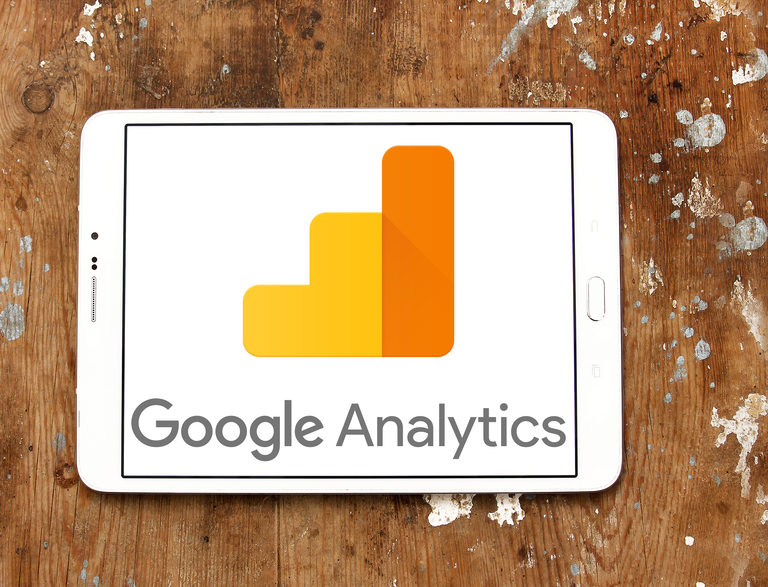5 Takeaways from Google Analytics to Boost Your Business
Google Analytics website insights are both free and invaluable. But like a gift card gathering dust on your dresser, the insights are worthless unless you apply them. In a previous post, we presented free basic Google tools. In this article, we examine Google Analytics business applications.
1. Build on the basics and on audience acquisition.
The first page of a Google Analytics report displays the number of visitors/users, session totals and duration, bounce rate, and returning users. Combine that information with the Acquisition Overview report to determine how to increase website visitors.
Action plan:
Examine how people are getting to your site and which avenues are working best. Decide which ones are worth focusing on and determine how to improve upon them.
- Organic search. Learn more about SEO and apply the lessons. Once SEO becomes second nature, the time spent improving each page can easily pay off.
- Social. Perhaps you’ve been sinking resources into social posting and advertising but it’s not paying off. Maybe this indicates that your audience doesn’t engage with social media. If so, you can spend your time and money elsewhere.
- Direct. High direct traffic numbers may demonstrate brand familiarity and loyalty. They can reflect the effectiveness of digital display ads, tv, print, or radio advertising. For businesses such as contracting and repair, a vinyl wrap on service trucks may be paying off. If the numbers are low, consider increasing display type advertising while focusing on branding strategies.
- Referral. UTM codes embedded into a website pinpoint referral sources and indicate which are worth keeping, improving upon, or deleting. For example, the hits may have come from local business listings or industry association sites, making those links worthwhile. If you got hits from media mentions, consider using press releases and marketing to continue engaging with the media
- SEM. Search Engine Marketing campaigns provide insights on user behavior, such as number of people interacting with the campaign, conversions via click to call, form fill, etc. You can also dig into campaign costs – including keywords and cost-per-acquisition – to determine return on investment.
2. Improve the UX to make your site more effective.
The Acquisitions Overview page also indicates if website improvements are needed to keep visitors engaged. If they aren’t staying long or browsing other pages, determine what you can do to improve the UX (User Experience).
Action plan:
- Content. Make sure your website copy is well-written and engaging, of interest to your audience, and tailored for web.
- Internal links. Include internal links to other content on your site.
- Internal referrals. Display attractive links to related pages on each page of your site. These can be programmed to appear automatically based on tags, departments, authors, etc.
3. Fine-tune the audience demographics.
Does the audience demographics match the ideal customer? Is a local lawn-care business getting excess traffic from New York City and Chicago rather than YourTown? Does a nail salon get more male website visitors than female? Is a daycare center website seeing more visitors over the age of 55 and a home healthcare site getting visitors under the age of 25?
Action plan:
Disconnects like these could signal the need to improve a site’s SEO, including its keywords, and the need for improved digital advertising. Targeted digital display advertising offers the ability to capture potential customers using factors relevant to your business needs. Within this advertising strategy, demographic targeting adjusts display for age, gender, salary, location, etc., while contextual targeting targets behaviors (purchase history, interests, etc.).
Similarly, geofencing technology connects smartphone users – potential customers – when they’re physically near a relevant location. A landscaping company, for example, could target consumers when they visit garden centers and nurseries.
4. Utilize your site’s peaks and valleys.
Cycles of interest and seasonality in your site traffic can guide your marketing. Understanding these peaks and valleys offers helpful Google Analytics business applications.
Action plan:
If more qualified users are coming to your women’s clothing website on Mondays and Fridays, for example, focus your social media and digital advertising for those days.
5. Interpret Google Analytics business applications to boost conversions.
A successful conversion is the culmination of many aspects of a business, including website and products. Qualified users need to find your site, stay on it long enough to act, navigate it successfully, find the conversion opportunity, be motivated to act, and then act!
Action plan:
If your website is not capturing conversions, dig deep. Use Multi-Channel Funnel reports on Google Analytics to see how channels worked together to create the end goal. And review steps 1 – 4 above, to gain the right users and motivate them to act.
Also look for clues within your business’s products and services. Are they appropriate for your market? Are they overpriced for the market? Does your website communicate their quality and value? Are they underpriced and seem cheap?
For more tools to build your website and your business, contact a digital agency like Ross Media Solutions that has demonstrated the ability to successfully navigate both digital and business landscapes.



